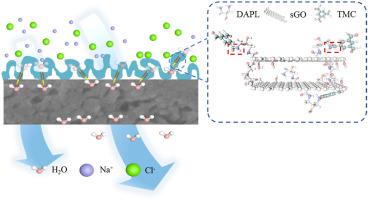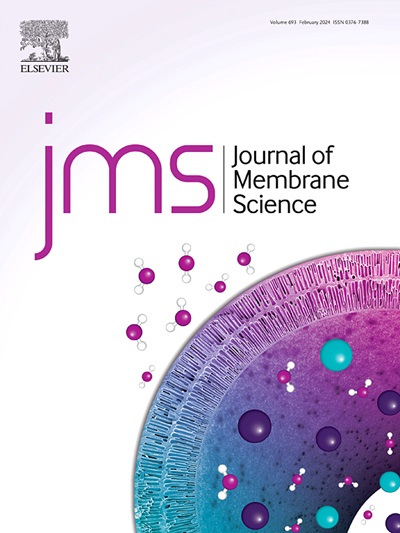Polyamide (PA) thin-film composite (TFC) reverse osmosis (RO) membrane has been widely used for desalination to produce fresh water. In order to further enhance the membrane’s water flux without sacrificing the salt rejection, in this study, a new kind of three-dimension (3D) multi-layer graphene oxide (mGO) was synthesized through the layer-by-layer (LbL) crosslinking between the sing-layer GO (sGO) nanosheet and 1,3-diamino-2-propanol (DAPL) molecule, and then was introduced into the aqueous phase solution to modify the conventional polyamide TFC RO membrane via interfacial polymerization (IP). The size and structure of mGO were regulated through the optimization of LbL crosslinking techniques, and the effect of mGO on the micro-structure and macro-property of thin-film nanocomposite (TFN) RO membrane was correspondingly investigated. It was found that the mGO made the PA layer surface of RO membrane smoother and more hydrophilic. Most importantly, it increased the water flux of RO membrane, improved the salt rejection above 99.3%, and endowed the RO membrane better long-term stability. Obviously, this is due to that mGO created a certain d-spacing through crosslinking DAPL molecules between sGO nanosheets, which provided channels for water transport across the PA layer and thus accelerated the migration of water molecules in the membrane, ultimately enhancing the water flux of TFN RO membrane. Meanwhile, the DAPL grafted on the outmost surface of mGO enhanced the compatibility between mGO(30) and PA polymeric matrix via the reaction with TMC during the IP, further improving the membrane’s salt rejection. Therefore, this study provides a facile way to improve the comprehensive separation performance of RO membrane.

| 公司名称 | 产品信息 | 采购帮参考价格 | |
|---|---|---|---|
| 百灵威 | Trimesoyl chloride (TMC) |
99%
|
¥20.00~¥148789.59 |
| 百灵威 | Trimesoyl chloride (TMC) |
|
¥20.00~¥148789.59 |
| 阿拉丁 | Sodium dodecyl sulfate (SDS) |
|
¥18.00~¥32009.70 |
| 麦克林 | 1,3-diamino-2-propanol (DAPL) |
98%
|
¥10600.00~¥17500.00 |
| 阿拉丁 | M-phenylene diamine (MPD) |
99%
|
¥26.00~¥6352.41 |
| 阿拉丁 | Triethyl amine (TEA) |
99.5%
|


